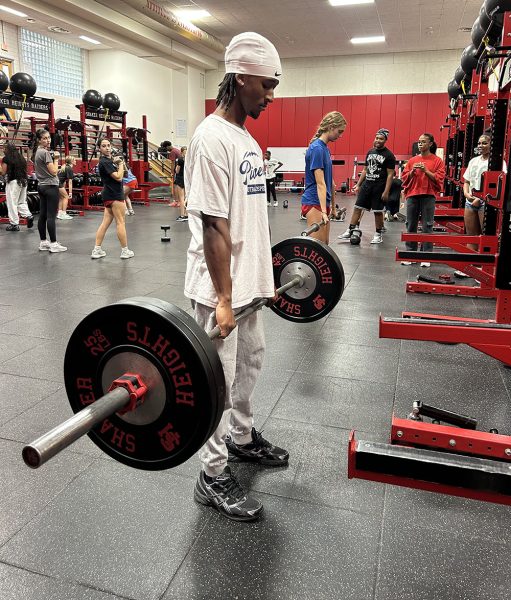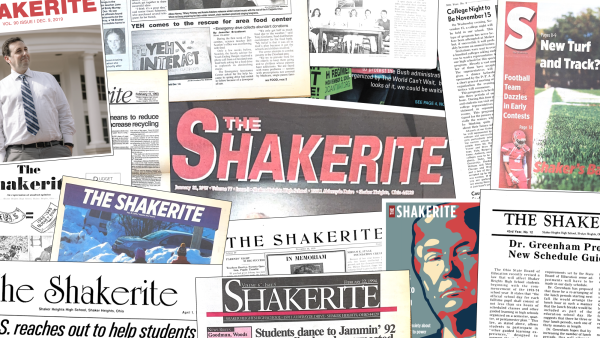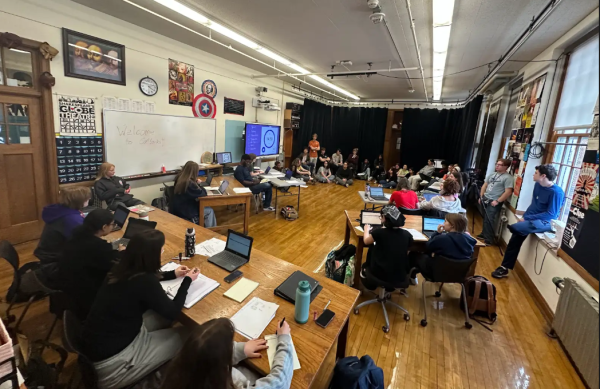Proposed Stipend Program Could Help Students Do More
At the core of the Shaker Schools’ mission is a passion to produce students truly ready to take on the world. Students participate in all manner of extracurricular activities, take unique course offerings, try new opportunities, start new clubs or travel to different countries. Most public schools can’t begin to compare.
Unfortunately, some students in the district don’t have the economic wherewithal to participate equally: 33.6 percent of students qualified for or received free and reduced price lunch in 2012. The Shaker factbook explains that this number “include[s] children of families who had Cuyahoga County Direct Certification of poverty (people receiving food stamps).” To qualify for reduced price lunch, a family of three has an annual income of $36,612 according to federal guidelines. The federal poverty line for a family of three is $19,790.
If that gives you some perspective, it illustrates that children of these families often have to work to help make ends meet. They don’t work on the weekend for pocket money, they work after school most days. These students don’t have time to join a club, take part in a different after-school course offering or start a new activity. They have to work. Missing a day of work to join a club just isn’t an option.
According to a Shaker Schools survey of more than 1,200 of the high school’s roughly 2,000 students, 22 percent of students cited “Conflicts with Job” as a reason they don’t participate in extracurriculars and other opportunities Shaker offers. The survey shows that at least one in five Shaker students find job and economic demands exclude them from extracurriculars.
This socioeconomic disparity among students emerges in academic measurements such as the Ohio Graduation Test and Advanced Placement participation, but it also manifests itself in who can participate in clubs.
Students from lower socioeconomic levels need the income they receive from working. To enable students to participate in any activity, we need to replace that income.
Northwestern University created a program that would address this economic inequity in activity participation. At Shaker, with a few adjustments, I hope that we, too, can fix this problem.
To reach this end, we must create a fund that will furnish a stipend for students whose families’ economic needs currently demand that they not miss work. Only students who receive free and reduced price lunch would qualify. The stipend would allow students to participate in clubs and other extracurriculars with students of a higher socioeconomic status at parity.
Only activities that promote career skills will be a part of the stipend program. Unfortunately, sports cannot be included. However, clubs, musical options and other choices will qualify. Students will learn interpersonal, speaking and writing skills as well as gain the ability to broker agreements with peers and adults and advance other interests. They will learn skills that, if not taught in the classroom, will be learned or enhanced in an extracurricular setting. All of these skills and the other incurred benefits from this outside activity will make these students more attractive college applicants. Perhaps college will even seem more accessible.
Because the stipend will be paid every two weeks over the semester, students will be held accountable. At the conclusion of the semester, the given club’s adviser will write a review of the student’s participation and the student will write a reflection on how effective and helpful this program was. Immediate feedback will continuously improve the program.
Creating this opportunity in the high school would be a boon for the Shaker Schools. It would advance Shaker’s reputation as a beacon school district. I have had unfathomable opportunities here. I haven’t had to worry about helping pay the monthly rent. Attending Shaker schools, but not being able to participate in its offerings, is a travesty.
Schools can’t and shouldn’t lift students’ socioeconomic standing. However, schools can help ameliorate equality of opportunity within their red brick walls. Helping students participate in extracurriculars not only helps students, but it also builds a stronger school district. With one burden alleviated, more students than ever before would participate and truly take pride in their schools. Students who do extracurriculars build their school up, further its mission and give back to their community.
Furthermore, now students of more diverse backgrounds sit in clubs together and form friendships. And maybe, just maybe, they start to take classes together and then, the student cohort taking advanced classes becomes more diverse.
I think the stipend program will start small. Perhaps initially only three or four students will be interested. But that’s three or four students who couldn’t participate in extracurriculars before! Those students may discover the passion that becomes their vocational calling. They might find themselves forming friendships, developing a mentor-mentee relationship with the club adviser and acquiring skills they never imagined they could possess. Suddenly, the Shaker philosophy to encourage all students to make great strides seems tangible to a student who has been left out of the Shaker Experience.
Such a proposal as this stipend policy has appeal — not just to participants. Individuals, churches, foundations, philanthropic organizations and any other soul willing to donate to an idea like this will have a significant impact. The Shaker Class of 2015 is considering helping fund this proposal as part of their traditional parting gift to the district.
Fundraising for this proposal would likely have positive results. It’s innovative and inspiring. Appealing to alums, Shaker residents and others to help facilitate Shaker’s mission for a wider population in the district, this proposal could draw from a wide variety of potential donors. The Shaker Schools Foundation’s well-known ability to fundraise illustrates the trait that numerous Shaker residents could be approached in support of this idea that fundamentally advances the Shaker Way. Shaker will again pioneer an idea to deconstruct barriers. We are known path-breakers in integration and the achievement gap. This, too, can be added to our list.
The Shaker Way, the Shaker Experience, the Shaker Mission — whatever you prefer to call it — is premised on the same idea: all Shaker students should be able to benefit from its opportunities. This is just another way to make that reality.
If it works, this could be bigger than Shaker, but Shaker is the best place to start.





